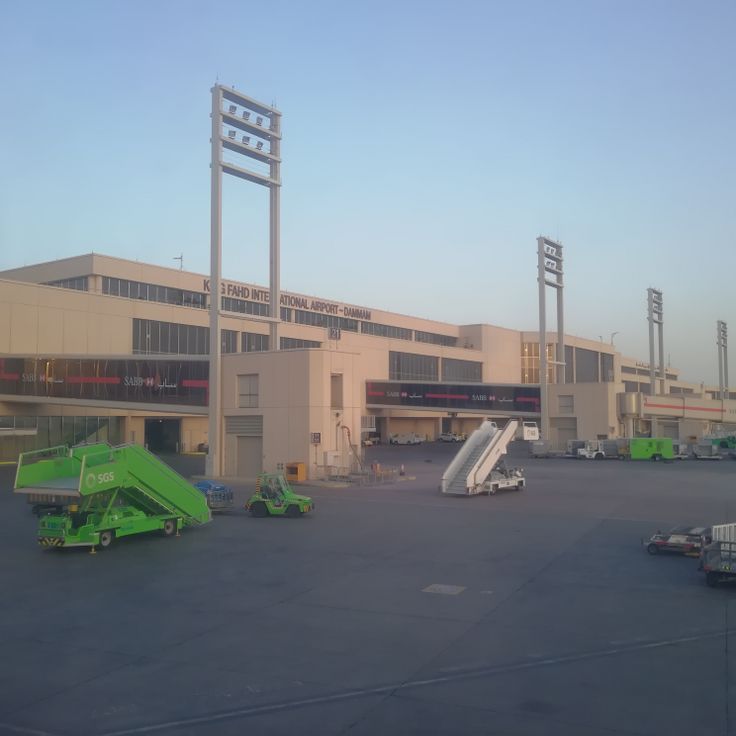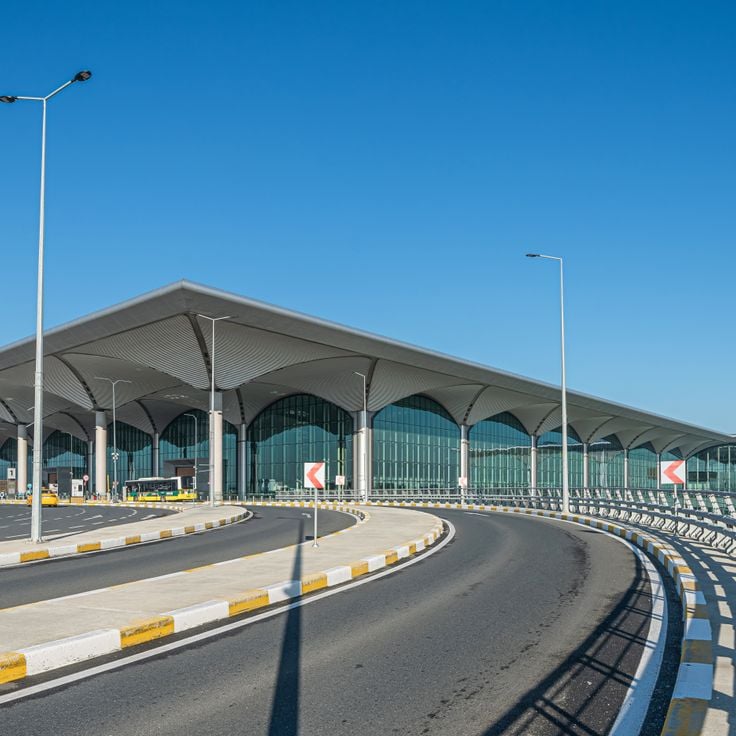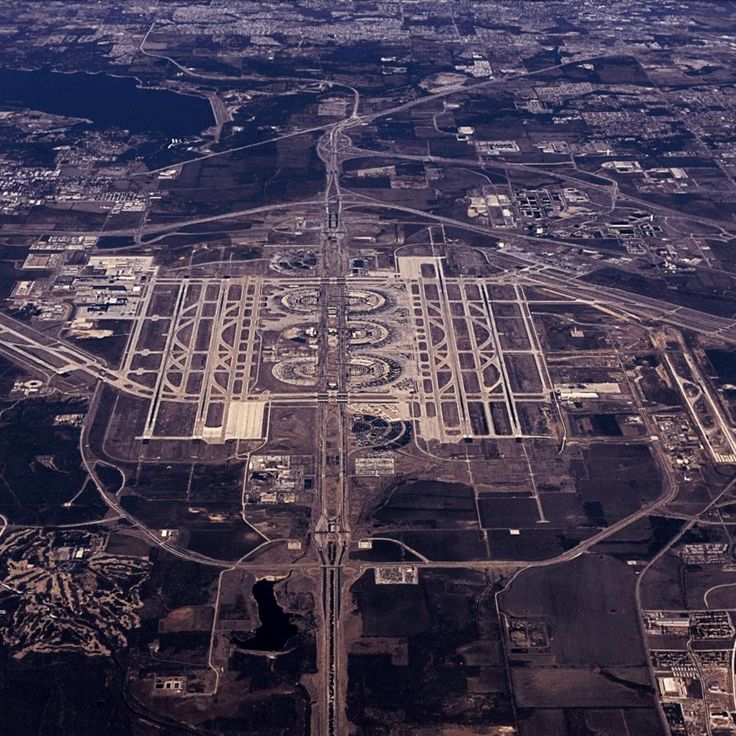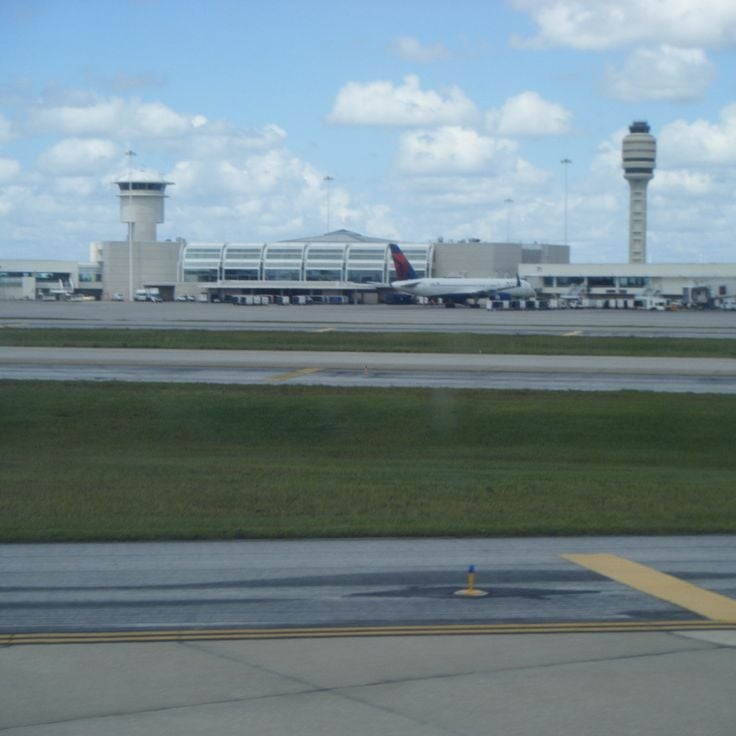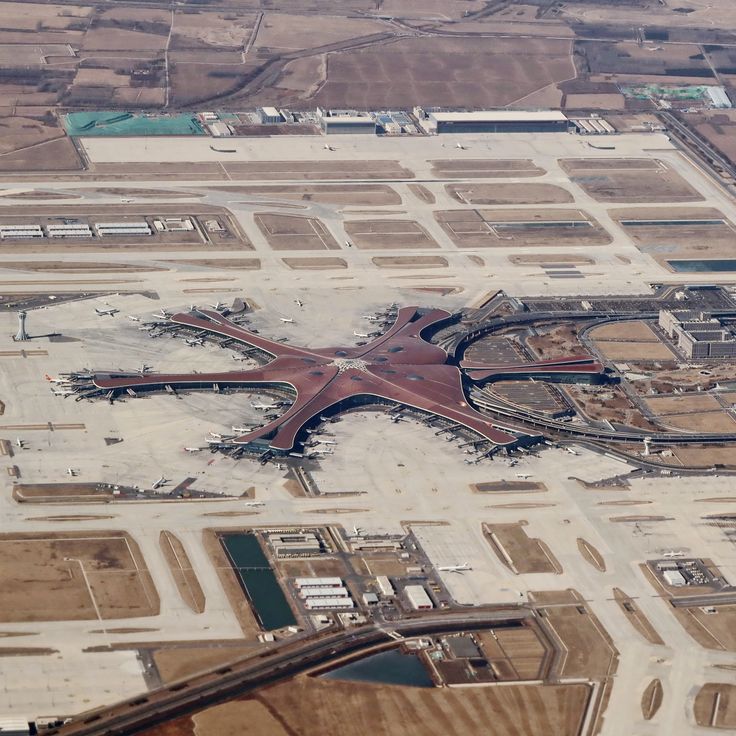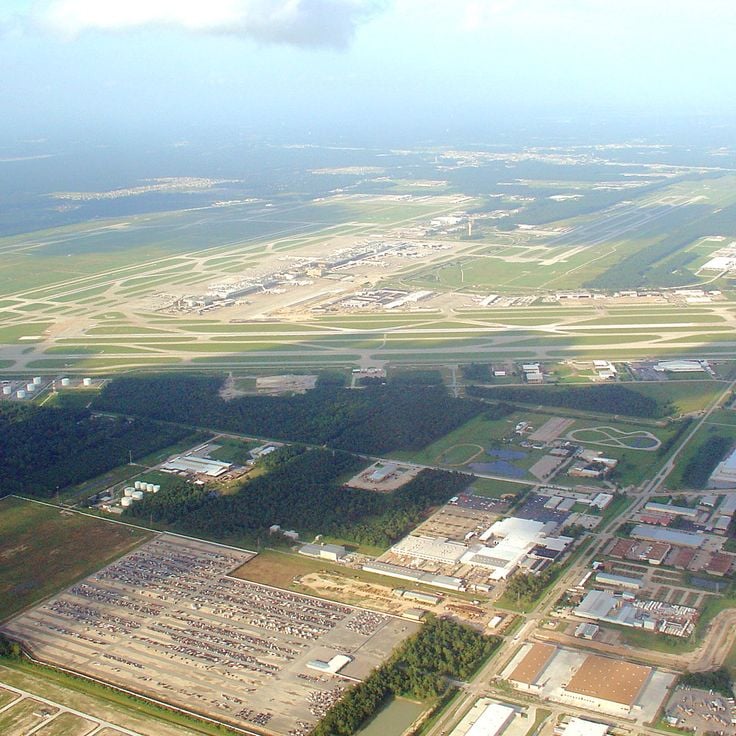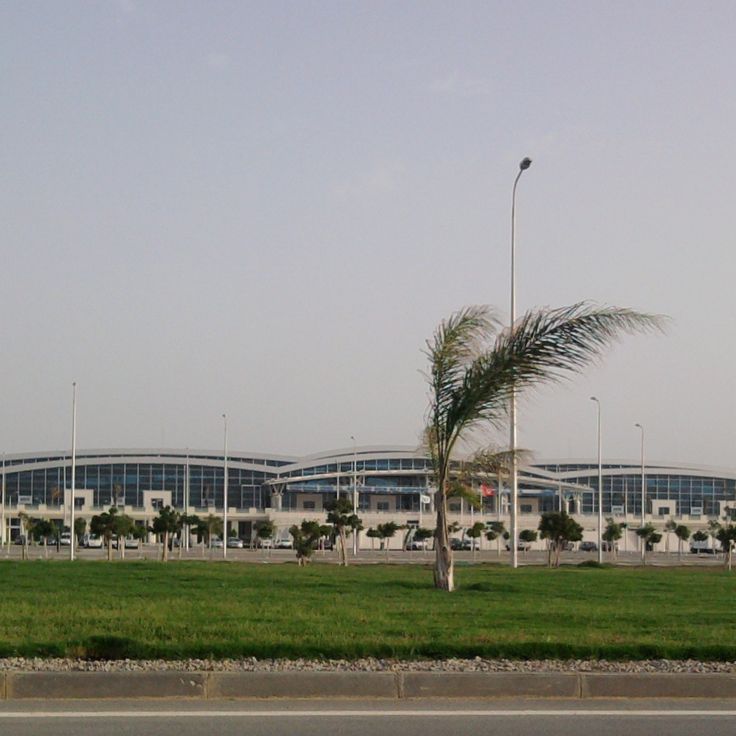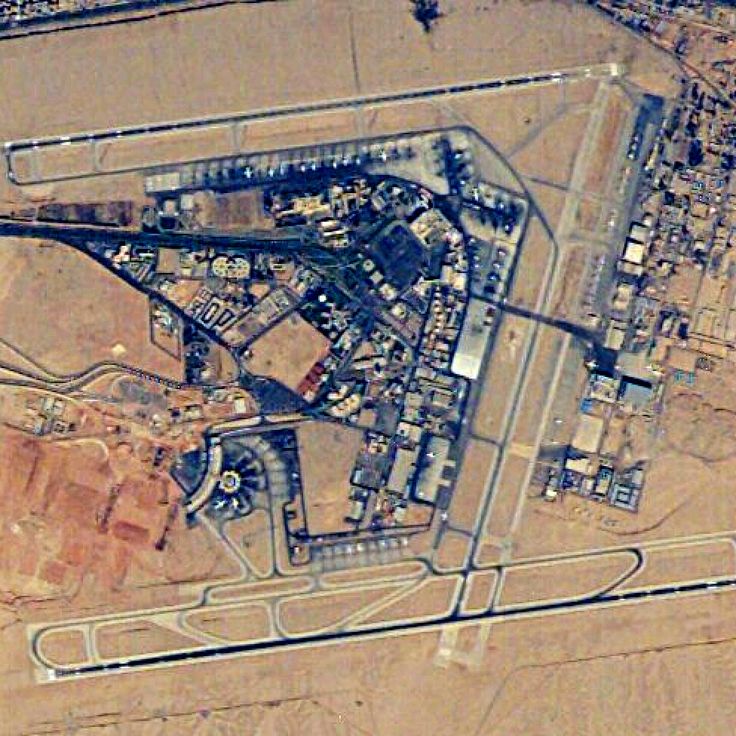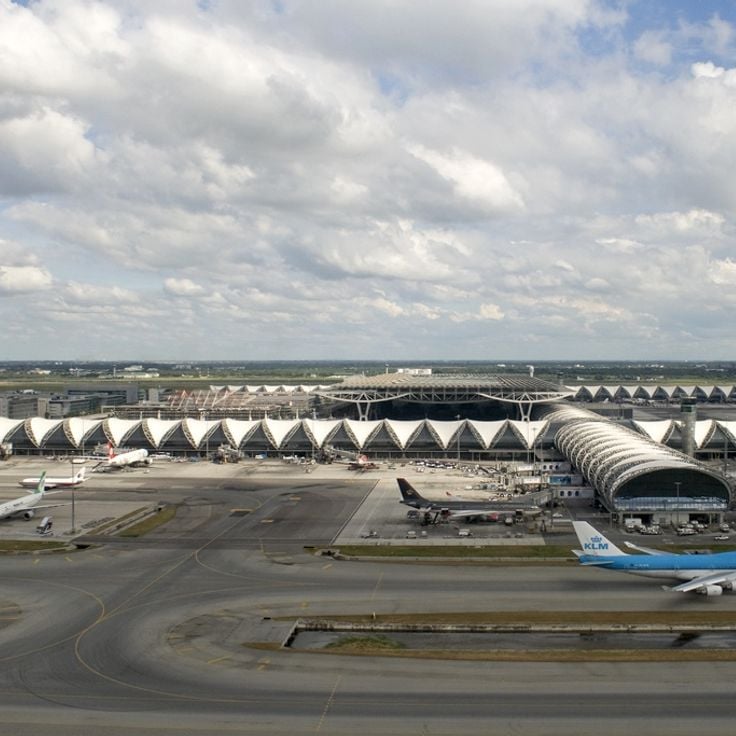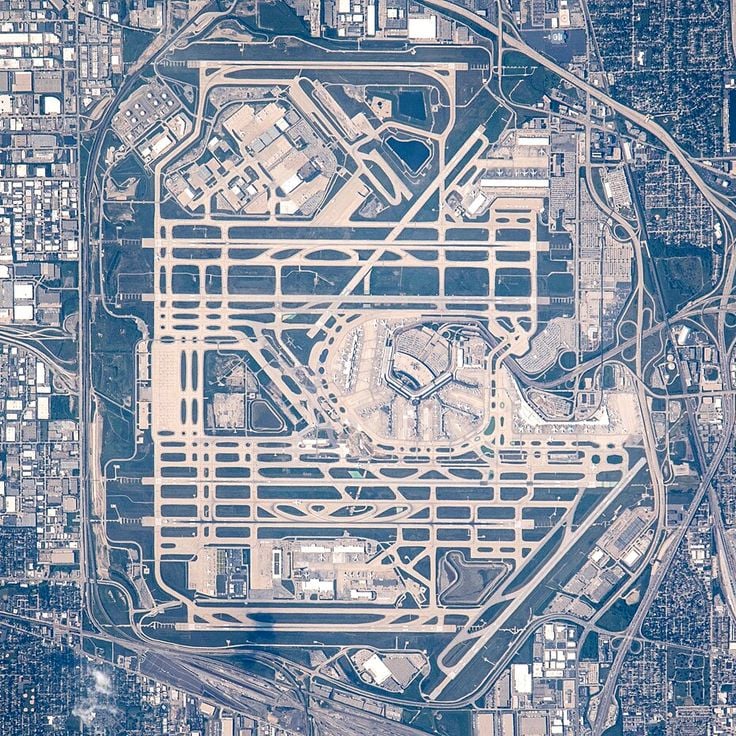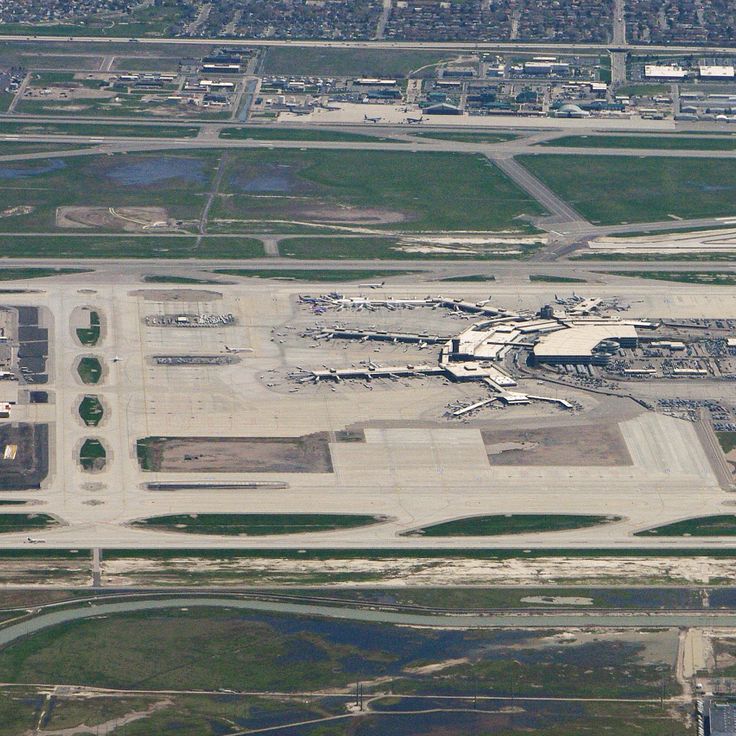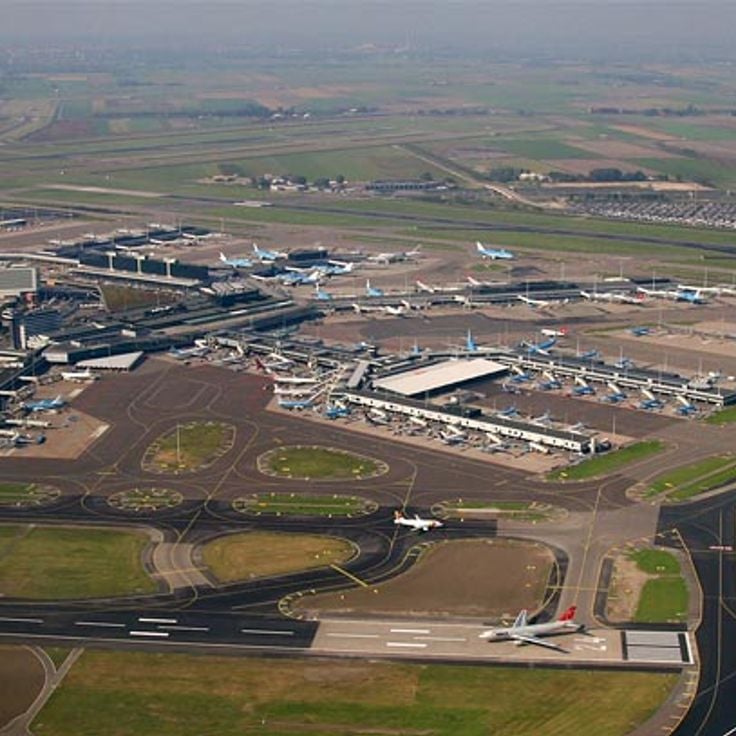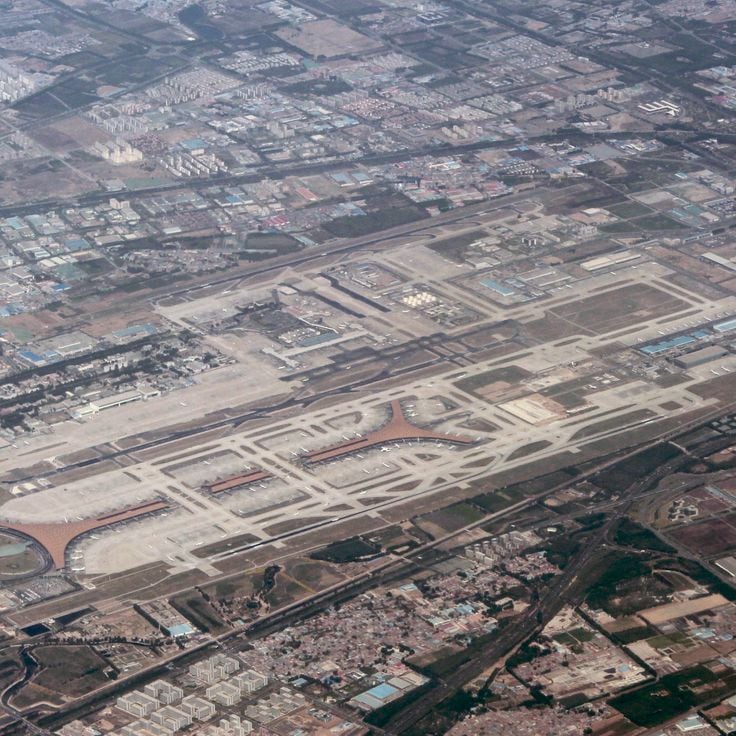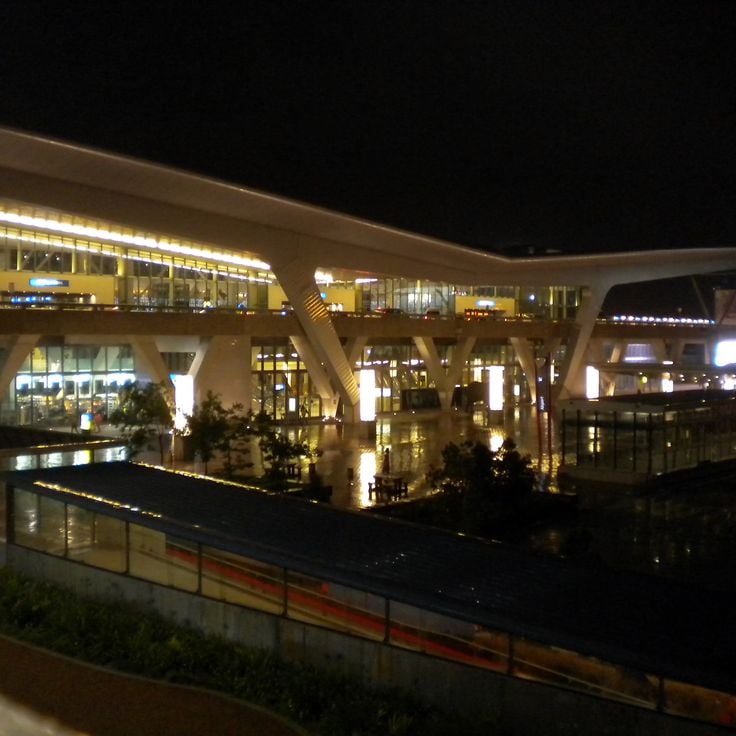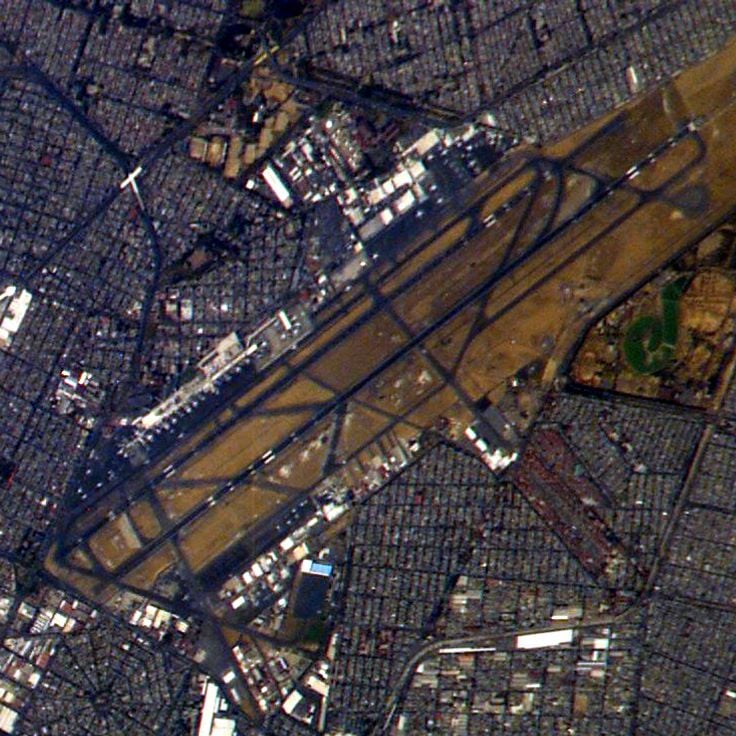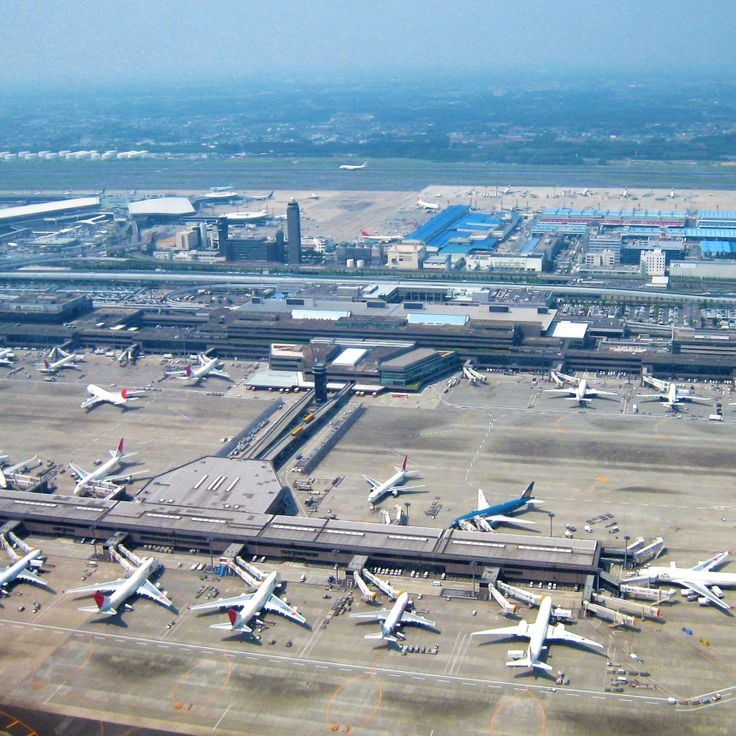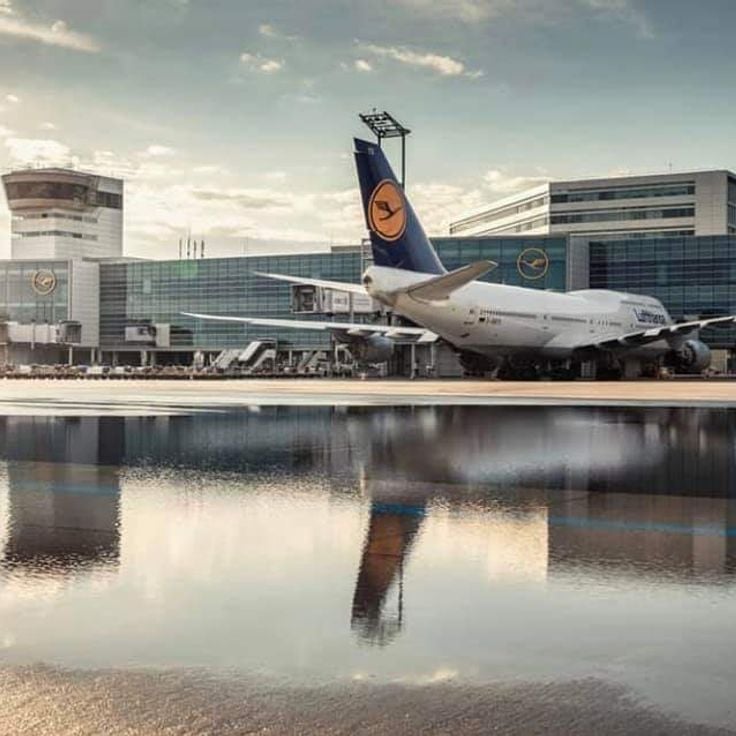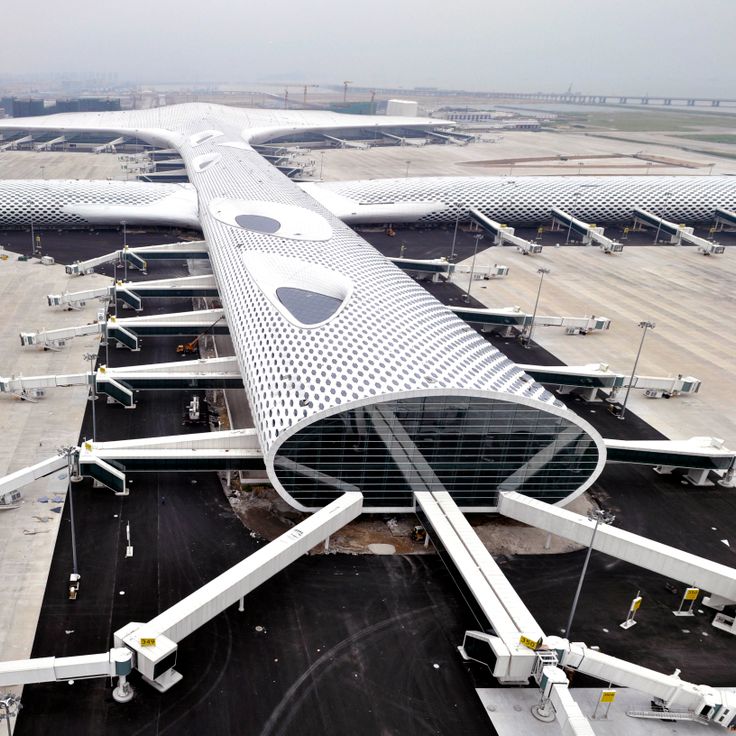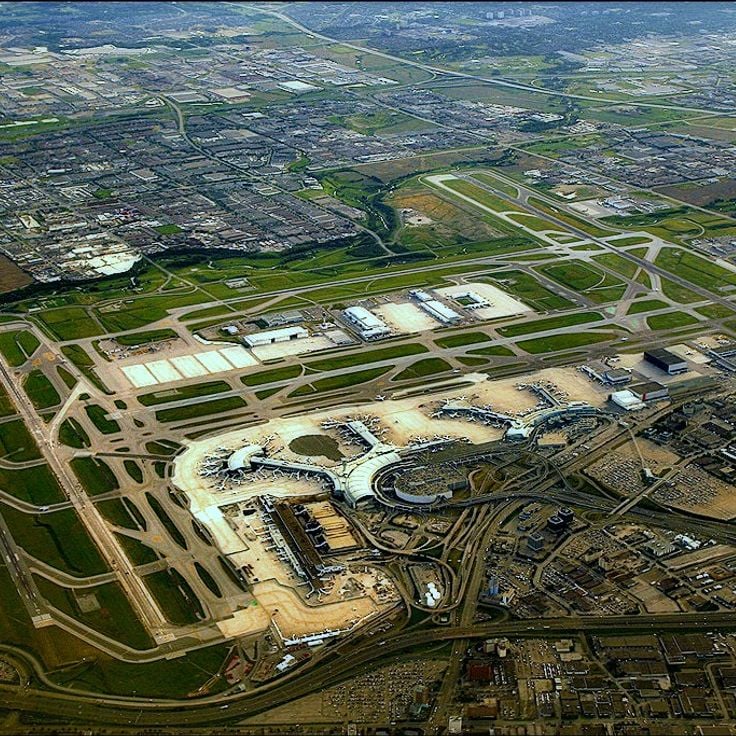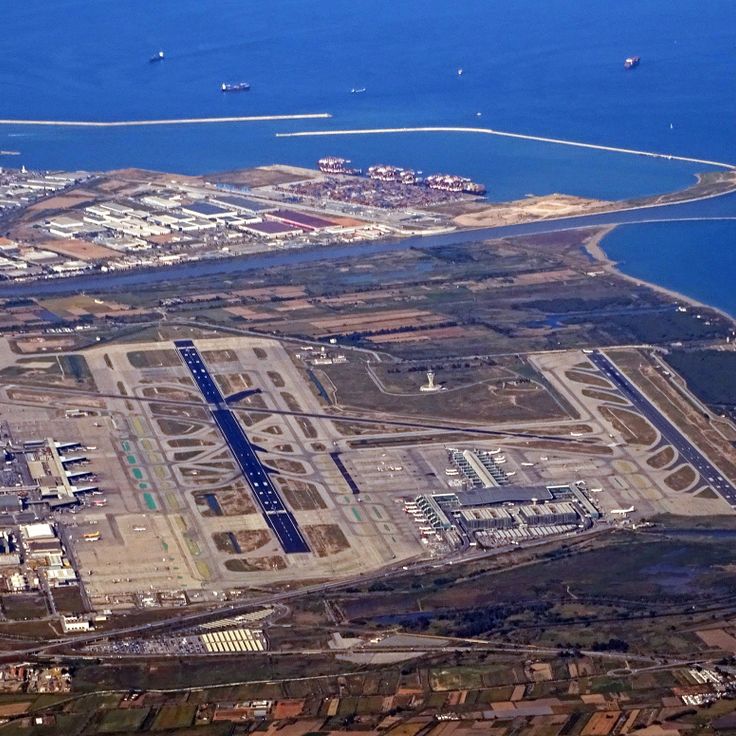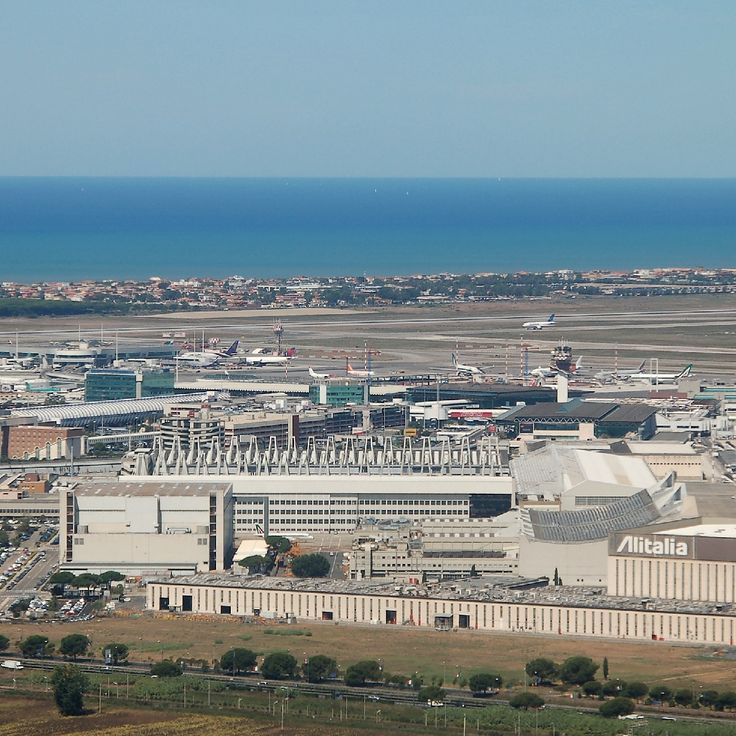This collection brings together the twenty largest international airports in the world by total area. From King Fahd International Airport in Saudi Arabia with its 776 km² to Beijing Capital International Airport with 23.3 km², these aviation facilities represent the most extensive installations on the planet. The list includes major hubs located in the United States, Asia, Europe, and the Middle East. These airports serve as central connection points for international travel, linking continents together. Denver International Airport spans 137 km² and features multiple terminals and six runways. Dallas Fort Worth International Airport covers 69 km² and ranks among the busiest airports in North America. In Asia, Beijing Daxing International Airport, with its contemporary architecture and 47 km² area, represents an important transportation hub. These large facilities enable extensive passenger and cargo operations. They house numerous terminals, hotels, conference centers, and connections to public transportation systems. Many of these airports occupy strategic positions and serve as gateways to economically significant regions and tourist destinations worldwide.
King Fahd International Airport spans 776 square kilometers, making it the largest airport in the world by land area. This facility opened in 1999 and serves as a major aviation hub for the Eastern Province of Saudi Arabia. The airport features a passenger terminal, cargo facilities, and extensive infrastructure to handle domestic and international flights. Its exceptional size includes operational areas as well as reserve land designated for future expansion projects.
Al Maktoum International Airport is located in the southern part of Dubai and covers an area of 140 square kilometers. This facility was developed as part of the Dubai World Central project and is designed to handle up to 160 million passengers annually upon full completion. The airport features modern terminals and cargo facilities that serve international air traffic.
Denver International Airport spans an area of 136 square kilometers, making it one of the largest airports in the United States by land area. The facility is located approximately 40 kilometers northeast of downtown Denver and features six runways. The distinctive terminal building with its tent-like roof structure opened in 1995 and serves as a major hub for domestic and international air traffic in the Rocky Mountain region.
Hartsfield-Jackson International Airport spans 78 square kilometers in southern Atlanta. This airport features five parallel runways and two terminal buildings with seven concourses. The facility handles over 100 million passengers annually and serves as a major hub for domestic and international connections.
Istanbul Airport opened in April 2019 and covers an area of 76.6 square kilometers on the European side of the city. This facility replaced Atatürk Airport as the main hub of the metropolis and features six runways along with modern terminals. The airport provides annual capacity for 200 million passengers and connects Europe, Asia, and the Middle East through numerous international flight routes.
Dallas-Fort Worth International Airport covers an area of 69.63 km² between the two cities of Dallas and Fort Worth in Texas. This facility features five terminals and serves more than 70 million passengers annually. The airport operates as a hub for American Airlines and connects the region to over 250 destinations worldwide. The infrastructure includes seven runways along with numerous facilities for cargo and maintenance operations.
Orlando International Airport spans 53.83 square kilometers in central Florida. This major transportation hub serves as the primary gateway to the region, processing millions of passengers annually. The extensive facilities include two main terminals, four runways, and comprehensive cargo and maintenance operations. The airport is located approximately 10 kilometers southeast of downtown Orlando.
Washington-Dulles International Airport is located in Virginia and covers an area of 48.56 km². This facility serves as a major international hub for the Washington metropolitan region. The terminal was designed by Eero Saarinen and features multiple runways. The airport connects the region to numerous destinations across North America, Europe, Asia, and the Middle East.
Beijing Daxing International Airport opened in September 2019 and covers an area of 47 square kilometers. This airport is located approximately 46 kilometers south of central Beijing and was designed to relieve congestion at the existing Beijing Capital International Airport. The terminal building was created by Zaha Hadid Architects and features a starfish-shaped structure with six piers that enable efficient passenger processing. The facility can handle up to 72 million passengers annually and provides four runways for aircraft operations.
George Bush Intercontinental Airport is located approximately 37 kilometers north of downtown Houston. This aviation facility covers an area of 44.51 square kilometers and features five passenger terminals. The airport serves as a hub for domestic and international connections, processing several million passengers annually. The infrastructure includes multiple runways and facilities for cargo and passenger operations.
Enfidha-Hammamet International Airport is located south of Sousse and covers an area of 43 square kilometers. This facility opened in 2009 and serves as a major gateway to Tunisia's coastal regions. The airport features modern facilities and two terminals handling both domestic and international flights. Its geographical position provides quick access to the tourist centers of Hammamet and Sousse.
Shanghai Pudong International Airport serves as the primary international gateway for Shanghai. This facility covers an area of 39.88 square kilometres and connects the Chinese economic hub with numerous destinations worldwide. The airport features modern terminals and facilities for passenger and cargo operations.
Cairo Airport covers an area of 36.25 square kilometers and serves as Egypt's primary aviation hub. The facility is located approximately 22 kilometers northeast of Cairo's city center and features multiple terminals handling domestic and international flights. The airport functions as the main base for the national carrier EgyptAir and connects the country to destinations across Africa, Europe, Asia, and the Middle East.
Bangkok-Suvarnabhumi Airport covers an area of 32.4 square kilometers and serves as the main international gateway for Thailand's capital city. This facility opened in 2006 and features two runways along with a passenger terminal that handles millions of travelers annually. The airport is located approximately 25 kilometers east of Bangkok's city center and provides connections to destinations across Asia, Europe, and other continents. The infrastructure includes modern facilities for passengers and cargo operations, as well as links to the urban transport network through an express rail line.
Charles de Gaulle Airport covers an area of 32.37 square kilometers northeast of Paris. This transportation hub features three terminals and connects the French capital with over 300 destinations worldwide. The facility processes more than 70 million passengers annually and serves as a major connection point for international flights between Europe, the Americas, Asia, and Africa.
Adolfo Suárez Madrid-Barajas Airport covers an area of 30.5 square kilometres, making it one of the largest airports in the world by surface area. This facility operates four runways and four passenger terminals, including Terminal 4 designed by Richard Rogers. The airport serves as the main hub for Spanish aviation and connects the capital with over 200 destinations across five continents.
O'Hare Airport is located northwest of downtown Chicago and covers an area of 29.13 square kilometers. This facility features multiple terminals connected by an automated transit system. The airport serves as a hub for domestic and international flights, handling millions of passengers annually. The infrastructure includes numerous runways as well as extensive facilities for cargo and maintenance operations.
Salt Lake City International Airport spans an area of 28.3 square kilometers, making it one of the largest airports in the world by surface area. This airport serves as a major hub for air traffic in the western United States, connecting Utah's capital with domestic and international destinations. The extensive facilities include multiple runways and modern terminal buildings.
Amsterdam Airport Schiphol covers an area of 27.87 square kilometres, making it one of Europe's largest airports by land area. This facility is located partially below sea level in the Haarlemmermeer region of the Netherlands. Schiphol operates six runways and serves as a major hub for international air traffic. The airport connects Amsterdam to over three hundred destinations worldwide and functions as the home base for Dutch airline KLM.
Beijing Capital International Airport served as the main aviation hub for the Chinese capital for decades. Covering an area of 23.3 square kilometers, this facility ranks among the largest airports in the world by land area. The airport features three passenger terminals and handled over 100 million passengers annually before the opening of the new Daxing Airport in 2019. The infrastructure includes two parallel runways along with extensive cargo and maintenance facilities.
Incheon International Airport is located on the reclaimed islands of Yeongjong and Yongyu, west of Seoul. This airport opened in 2001 and covers an area of more than 56 square kilometers. The facility features two passenger terminals and handles over 70 million travelers annually. The airport serves as a hub for several Korean airlines and connects South Korea with destinations across Asia, Europe, and the Americas.
Kuala Lumpur International Airport is located approximately 45 kilometres south of the Malaysian capital in Selangor state. This aviation facility opened in 1998 and covers an area of around 100 square kilometres. The airport features two parallel runways and two main terminals that handle several million passengers annually. Serving as the primary hub for Malaysia Airlines, this airport connects the country with numerous destinations across Asia, the Middle East, Europe and Oceania.
Cape Town International Airport is located approximately 20 kilometres east of the city centre and serves as the primary aviation gateway to the Western Cape province. The facility features two runways and handles several million passengers annually. This airport connects the region with domestic destinations as well as international routes to Europe, Asia, and the Middle East. Terminal buildings provide shopping facilities, dining options, and car rental services for travellers.
OR Tambo International Airport is located east of Johannesburg and serves as South Africa's primary aviation hub. This airport covers a substantial area in Kempton Park and features two parallel runways. The facility connects southern Africa with international destinations across all continents and handles several million passengers annually. Named after anti-apartheid politician Oliver Reginald Tambo, this airport represents the country's modern infrastructure development.
Mexico City International Airport is located in the Venustiano Carranza borough, east of the historic center of the Mexican capital. This aviation facility serves as the country's main airport, connecting Mexico with numerous domestic and international destinations across North, Central, and South America, as well as Europe and Asia. The airport features two terminals and processes millions of passengers annually, making it one of the busiest airports in Latin America.
Narita International Airport is located approximately 60 kilometers east of Tokyo and serves as Japan's primary international aviation gateway. The facility spans over 1,000 hectares and features three terminals along with two parallel runways. This airport opened in 1978 and connects Japan to destinations across Asia, Europe, North America, and other continents. The infrastructure includes shopping areas, restaurants, and lounges designed to accommodate international travelers.
Frankfurt Airport serves as Germany's largest aviation hub and ranks among Europe's busiest air transport facilities. This airport covers an area exceeding 2,000 hectares and operates four runways that handle more than 60 million passengers annually. The facility functions as the primary hub for Lufthansa and accommodates numerous international carriers. The infrastructure includes two passenger terminals equipped with modern facilities for processing and transit operations.
Shenzhen Bao'an International Airport is located in Bao'an District and serves as the main aviation hub for Shenzhen and Guangdong Province. The airport features three terminals and three runways, handling significant passenger and cargo traffic. The facility covers a substantial area and connects domestic and international destinations across Asia, Europe, and other continents. The airport is accessible from the city center through various transportation options, including metro lines, buses, and taxis. Modern facilities include shops, restaurants, and lounges for travelers.
Toronto Pearson International Airport is located in Mississauga and serves as the primary air transport hub for the Toronto region. This facility features five runways and two passenger terminals that handle millions of travelers annually. The airport connects Canada to numerous international destinations and operates as a hub for multiple airlines. The extensive grounds include cargo facilities, maintenance areas, and various aviation infrastructure.
Barcelona-El Prat Airport is located 12 kilometres southwest of the Catalan capital and covers an area of 1,553 hectares. This aviation facility features two runways and two passenger terminals connected by an automated train system. The airport serves as a major hub for the Mediterranean region, linking Barcelona with over 200 destinations worldwide. The facility offers direct train connections to the city centre via the R2 Nord line of Cercanías, as well as connections to the Barcelona Metro network.
Munich Airport Franz Josef Strauss covers an area of approximately 15.6 square kilometers between Hallbergmoos and Oberding. This facility opened in 1992 and serves as the main hub for Lufthansa and as an important node for international air traffic. The airport features two parallel runways and handles millions of passengers from around the world each year.
Leonardo da Vinci Airport is located in Fiumicino, approximately 30 kilometers southwest of Rome. This international hub opened in 1961 and features four terminals that handle over 40 million passengers annually. Covering a total area of 16 square kilometers, this airport ranks among the largest in Europe and serves as the main gateway to the Italian capital, as well as an important connection center for flights within Europe and to international destinations.
